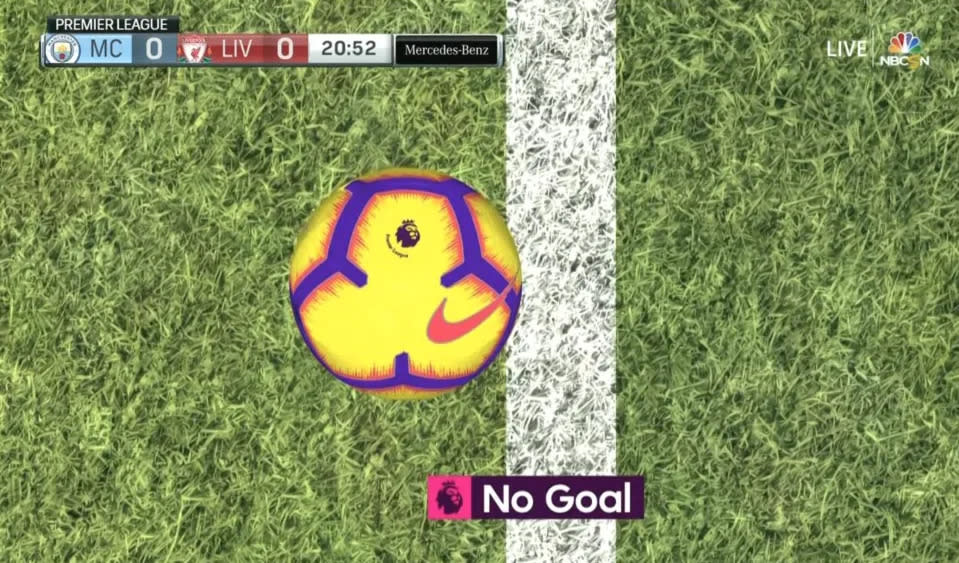USWNT's World Cup dream ends by a millimeter: 'It's brutal'
MELBOURNE, Australia — For 27 agonizing seconds, Alyssa Naeher thought she’d kept it out.
For 27 agonizing seconds here at the Melbourne Rectangular Stadium, she was a World Cup hero, and American dreams were alive.
She’d palmed away a penalty, then lunged to scrape it off a goal-line, and for 27 seconds, she wagged her finger, and grabbed that precious ball, and “No,” she told referee Stéphanie Frappart, it hadn’t fully crossed that perilous line.
But then she heard a whistle. She stared, eyes wide, mouth agape, intensity unflinching, as Frappart gestured and waved her arms, furthering confusion.
And then, in an instant, dreams died.
Swedish players sprinted toward their fans in glee.
[Join or create a Yahoo Fantasy Football league for free today]
After 120 grueling minutes of soccer, and seven rounds of penalties, and one decisive video review, officials determined that Lina Hurtig’s effort had cleared the goal line by an unseeable margin. The U.S. women’s national team was out of the World Cup. And Naeher was gutted — especially after seeing the automated freeze frame.
“It's tough,” she later said, “to have your World Cup end by a millimeter.”
After review, the penalty is good and Sweden wins 🇸🇪
🇺🇸:✅✅✅❌❌✅❌
🇸🇪:✅✅❌❌✅✅✅ pic.twitter.com/PbidlCoiWd— FOX Soccer (@FOXSoccer) August 6, 2023
And no, she wasn’t exaggerating.
Teammates had seen the harrowing image, and confirmed: “It was like a millimeter that kept us away from going onto the next round,” forward Lynn Williams said. “And so, that stings a little bit more than normal.”
Alyssa Naeher nearly kept it out 🧤 pic.twitter.com/DjpatlgCKD
— FOX Soccer (@FOXSoccer) August 6, 2023
Swedish players had also seen it, and zoomed in, to reveal the preposterous margin by which they’d beaten the U.S. in the World Cup Round of 16. In their locker room, crowded around phones, in between celebratory dances, they cackled in delight.
But elsewhere, there were questions — and tears.
“I would've liked a check,” Naomi Girma said with a pained chuckle. “I don't know. It's brutal.”
FIFA didn’t immediately explain the decision. What we know, though, is that 14 high-speed cameras are perched near the top of every World Cup stadium for this very moment. They serve a system called “goal-line technology” that, for almost a decade now, has been able to conclude with remarkable precision and immediacy whether a ball has or hasn’t fully crossed the line.
But still, there were questions.
FIFA says that the locational data captured by cameras “is transmitted within one second, which ensures an immediate response from the referee,” who receives a signal via a high-tech watch. So why had Frappart taken almost 27 seconds?
Likely because, on extremely close calls, a Video Assistant Referee (VAR) also reviews the decision to confirm it.
And although the technology is precise, it isn’t perfect. In the past, it reportedly carried a margin of error in the range of 3-5 millimeters. Was Naeher’s save-turned-goal potentially within that range?
For comparison’s sake, this Manchester City clearance in 2019 averted a goal by 11 millimeters:

And that margin was seeable. The USWNT’s was nearly undetectable.
FIFA did not respond to questions about the U.S.-Sweden margin, and a spokesman said the governing body wouldn’t comment on the technology’s error margin. FIFA's goal-line tech provider, Hawk-eye, prominently known for its automated tennis judging system, didn’t immediately respond to an email either.
But of course, at this point, no answer could ease Naeher’s “heartbreak.”
She’d allowed only a single goal all tournament. She’d pushed aside one penalty Sunday, and then, with the five-round shootout in sudden death, she thought she’d saved a second. As Frappart held one hand to her ear-piece and held the other outstretched, she didn’t communicate much. “She was just saying to wait,” Naeher later said.
Then she struggled to communicate the final decision. She pointed toward midfield; nobody knew what that meant. She waved her arms; still, no reaction.
Frappart then seemed to communicate verbally with Hurtig, who leapt in the air, and triggered the wild celebration.
U.S. players, who were stationed near midfield hoping to continue the shootout, looked around, bewildered.
Naeher clutched the ball, and pointed toward Frappart as her opposite number, Swedish goalkeeper Zećira Mušović, ripped off her gloves and tried to shake Naeher’s hand.
Naeher stood there for seconds, almost paralyzed, glancing around, stunned. She then dropped into a crouch, the ball still in her hands. She remained somewhat stoic. But all around her, tears flowed.
They flowed for obvious reasons, because they flow after any World Cup campaign ends early. But this ending had been particularly wrenching.
“I see pictures now. I still can't see how,” head coach Vlatko Andonovski said of the decider. “But that just shows how cruel this game sometimes can be.”
